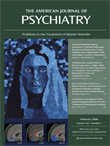Natural Recovery and Treatment-Seeking in Pathological Gambling: Results of Two U.S. National Surveys
Abstract
OBJECTIVE: Pathological gambling is described in DSM-IV as a chronic and persisting disorder, but recent community-based longitudinal studies that have highlighted the transitory nature of gambling-related problems have called into question whether this is an accurate characterization. This emerging evidence of high rates of recovery coupled with low rates of treatment-seeking for pathological gambling suggests that natural recovery might be common. The purpose of the present study was to document the rates of recovery, treatment-seeking, and natural recovery among individuals with DSM-IV pathological gambling disorder in two large and representative U.S. national surveys. METHOD: Prevalences of recovery, treatment-seeking, and natural recovery were estimated among individuals from the Gambling Impact and Behavior Study (N=2,417) and the National Epidemiologic Survey on Alcohol and Related Conditions (N=43,093) who reported a lifetime history of DSM-IV pathological gambling disorder (N=21 and N=185, respectively). RESULTS: Among individuals with a lifetime history of DSM-IV pathological gambling, 36%–39% did not experience any gambling-related problems in the past year, even though only 7%–12% had ever sought either formal treatment or attended meetings of Gamblers Anonymous. About one-third of the individuals with pathological gambling disorder in these two nationally representative U.S. samples were characterized by natural recovery. CONCLUSIONS: Pathological gambling may not always follow a chronic and persisting course. A substantial portion of individuals with a history of pathological gambling eventually recover, most without formal treatment. The results of large epidemiological surveys of pathological gambling may eventually overturn the established wisdom about pathological gambling disorder.



